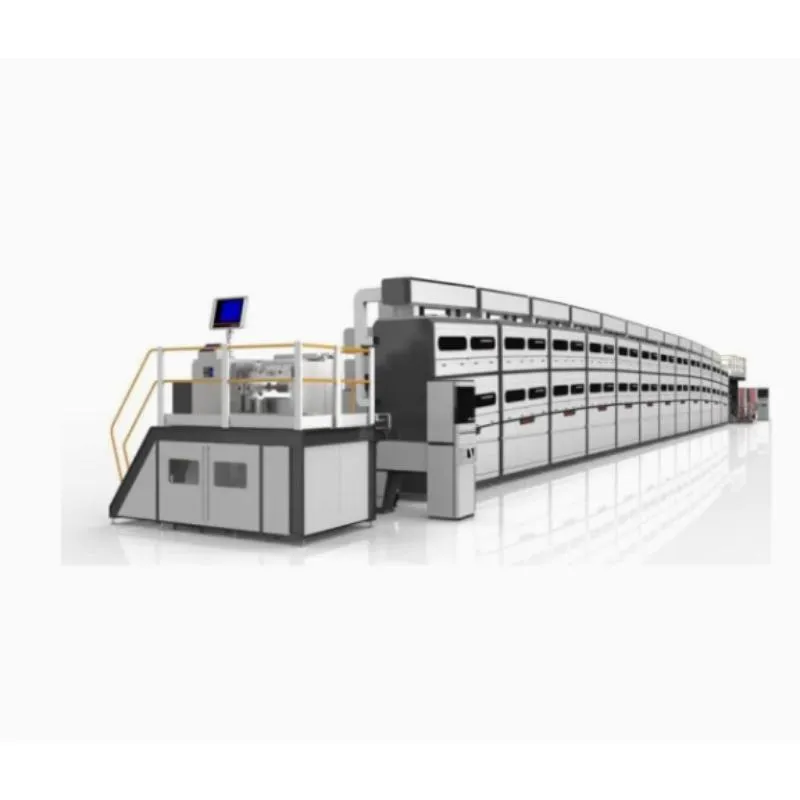Equipment for Lithium Cell Assembly—Fast, Precise, Turnkey?
On the line: Coating machines and the new era of lithium cell assembly
If you’ve walked a battery shop floor lately, you know the real bottleneck isn’t always formation or aging—it’s coating. Among modern equipment for lithium cell assembly, the roll-to-roll coater has quietly become the make-or-break station for yield and consistency. I’ve seen a few lines where a small tweak in slurry delivery or web tension changed everything—less scrap, happier QA, and fewer late nights.
The SDC-100 Roll to Roll Automatic Coating Machine (by a manufacturer in Xingtai, Hebei, China) is one of those “workhorse” platforms. To be honest, it’s not flashy—but it is steady. And in battery, steady is gold.

Where it fits in the process
Typical electrode flow: slurry mixing → filtration/defoaming → coating (single- or double-side) → multi-zone drying → calendering → slitting → stacking/winding → electrolyte filling → formation & aging → EOL testing. The coater decides coating weight (mg/cm²), porosity, and adhesion downstream. For pouch, prismatic, and cylindrical (18650 to 4680), a stable coater means fewer reworks. Many customers say uniformity is the quiet hero.
SDC-100 quick specs (real-world may vary)
| Model | SDC-100 Roll to Roll Automatic Coating Machine |
| Coating width | up to ≈ 1000 mm (customizable) |
| Coating method | Slot-die or comma; single-/double-side (two-pass or simultaneous) |
| Uniformity | ±1.5–2.0% coating weight, Cpk ≥1.67 (typical) |
| Drying | Multi-zone oven, up to 180–220°C; solvent recovery (NMP/H₂O) |
| Web speed | ≈ 0.5–50 m/min (application-dependent) |
| Alignment & tension | EPC + closed-loop tension; edge bead control; camera vision |
| Substrates | Al/Cu foil (6–20 μm), various collectors |
| Price & terms | FOB US$30k–100k/set; Port: Tianjin; Lead time: 4–8 weeks; TT |
| Origin & life | Xiangdu District, Xingtai, Hebei, China; service life ≈ 8–10 years |
Quality, testing, and compliance
Inline beta/NIR gauges (optional) track coat weight; peel strength (e.g., GB/T 2790) and adhesion checks are routine. Cells downstream aim at IEC 62660 for performance and UN 38.3 for transport. Plants usually hold ISO 9001; automotive lines chase IATF 16949. I’ve seen teams run GR&R on thickness control weekly—quietly boring, and absolutely essential.
Vendor snapshot (indicative)
| Vendor | Coating accuracy | Lead time | Price | Certs/Support |
|---|---|---|---|---|
| SDC-100 (China) | ±1.5–2.0% (typ.) | ≈ 4–8 weeks | $$ | ISO 9001; remote + onsite |
| Vendor A (EU) | ±1.0–1.5% | ≈ 10–16 weeks | $$$ | CE, ISO/IATF; strong local |
| Vendor B (US) | ±1.2–1.8% | ≈ 8–14 weeks | $$$ | UL/CE; strong training |
Applications, customization, and what customers ask for
- Applications: EV, ESS, power tools, e-mobility; cathode/anode coating.
- Customization: slot width, die lip geometry, double-side modules, solvent recovery, HEPA, ATEX options, MES/SECS/GEM links.
- Common requests: faster recipe changeover, web cleaning, inline defect mapping. Surprisingly, energy recovery in ovens is now a board-level topic.
Real-world outcomes (brief)
Case 1 (pouch line): Coating weight variability cut from 3.2% to 1.6%, yield +5.4%, NMP loss −18% after oven tuning. Case 2 (cylindrical): Downtime −22% with recipe presets; operators said start-ups felt “calmer,” which, I guess, is the point.
If you’re shortlisting equipment for lithium cell assembly, look beyond headline accuracy. Ask about tension windows, solvent handling, and service access. Also, maintenance—5 minutes saved per thread-up adds up in a 24/7 plant.
Address note: Room 1410, No. 119 Zhongxing East Street, Xiangdu District, Xingtai City, Hebei Province, China. FOB Port: Tianjin. Order: 1 set. In practice, pilot lines start with one coater, then clone.
Final thought: good equipment for lithium cell assembly is quiet gear. When the line team stops talking about the coater, you probably picked the right one.
References
- IEC 62660: Secondary lithium-ion cells for EV applications.
- UN Manual of Tests and Criteria, Part III, Subsection 38.3 (UN 38.3).
- ISO 9001: Quality management systems—Requirements.
- U.S. DOE, Battery Manufacturing R&D: Electrode Processing Best Practices (technical reports).
Share
-
Lithium Battery Welding Machine | High-Precision, Fast, SafeNewsNov.17,2025
-
Aluminium Guide Roller | Anodized, Lightweight, Low-NoiseNewsNov.17,2025
-
Tofu Cat Litter Bulk – Eco, Low-Dust, Fast Clumping SupplyNewsNov.17,2025
-
Equipment for Lithium Cell Assembly | Automated & PreciseNewsNov.10,2025
-
Square File Tool – Precision Cut, Hardened Steel, VersatileNewsNov.10,2025
-
Lithium Ion Battery Assembly Machine | Automated, High-SpeedNewsNov.10,2025







